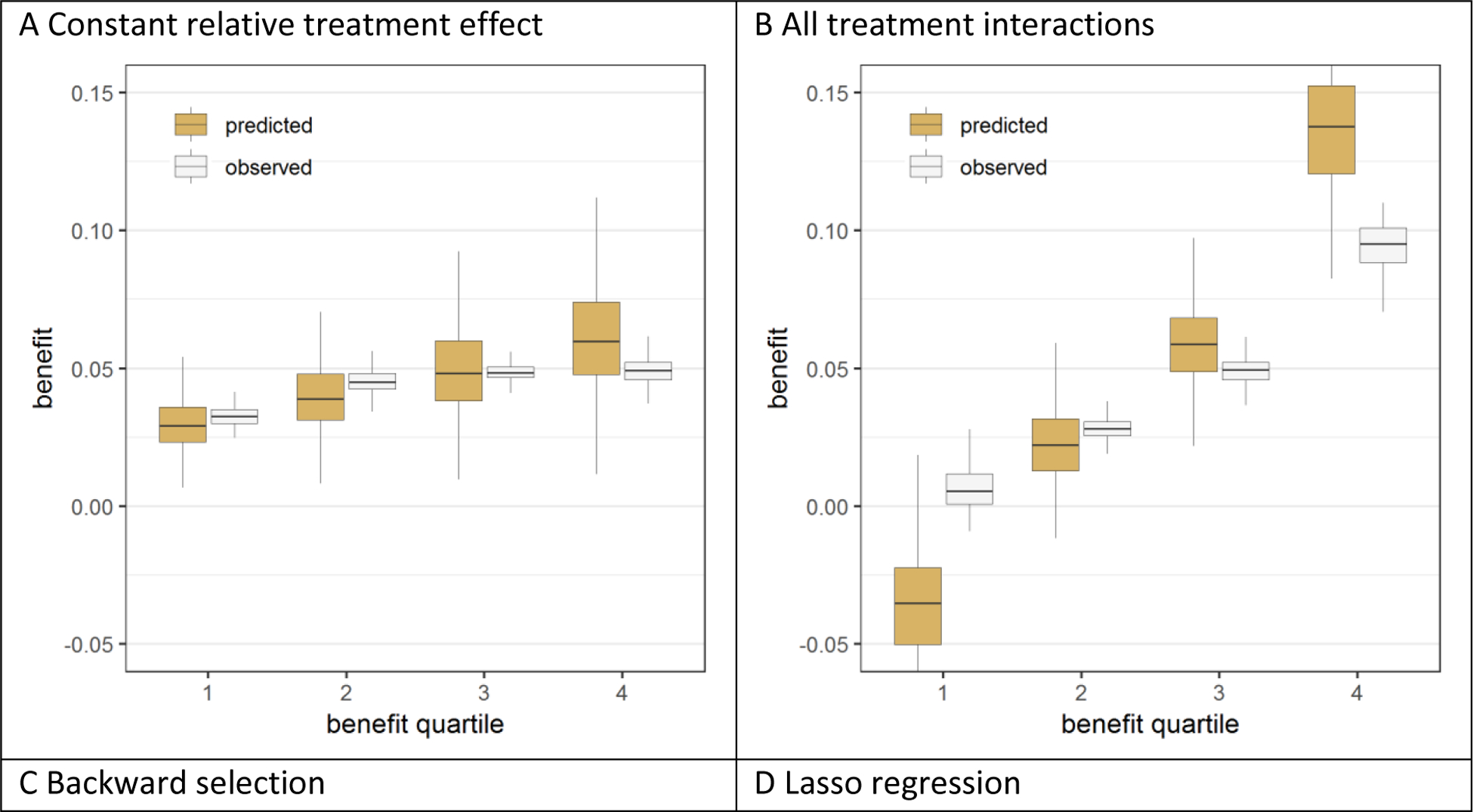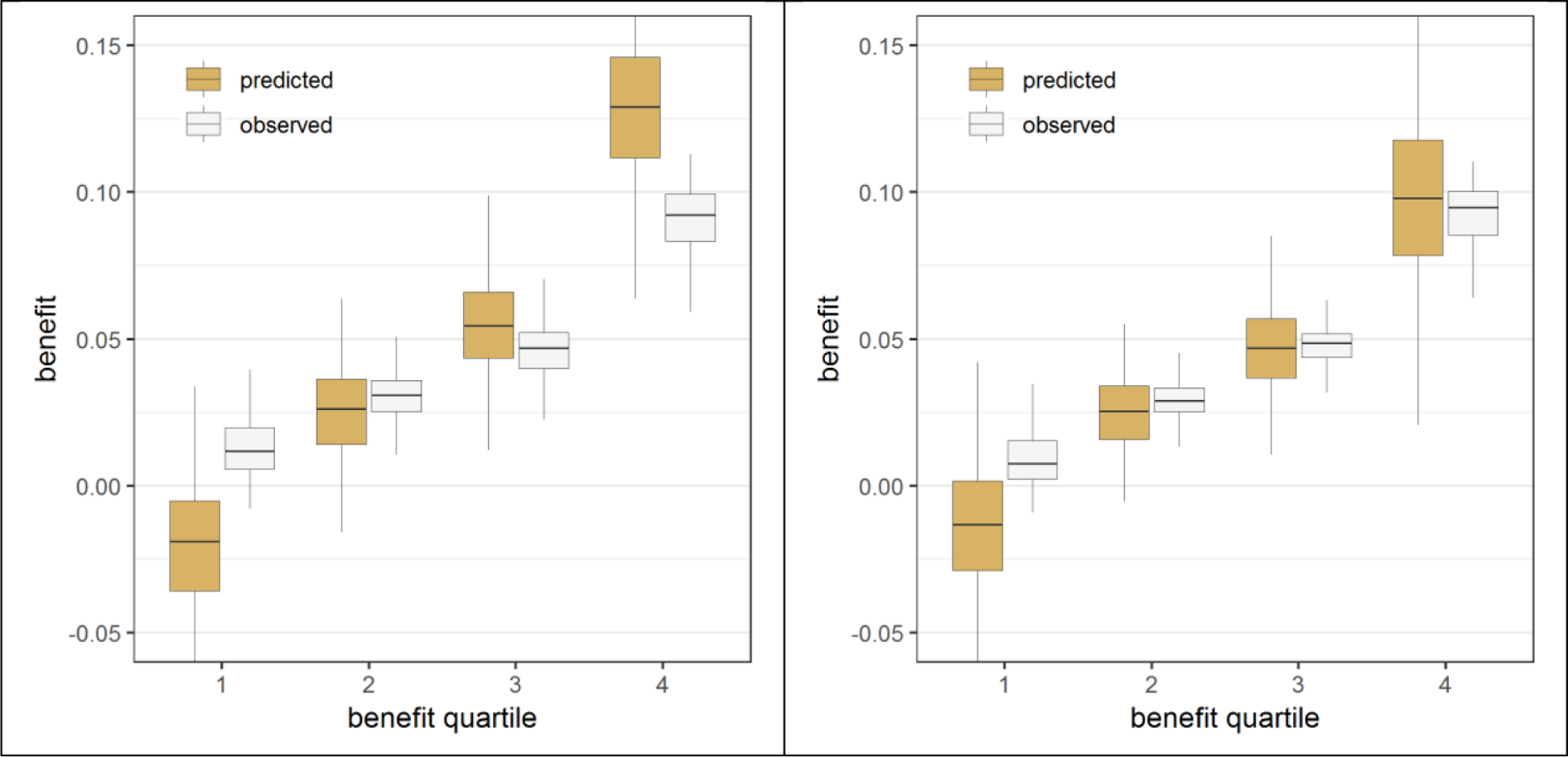Figure 3. Effect modeling approaches were better able to separate patients with differential benefit in the presence of true treatment interaction, but required penalized regression to prevent overfitting.


Benefit predictions were based on different models fitted in the samples: a model without treatment interactions (panel A), a model with all treatment interactions (panel B), a model with all treatment interactions using backward selection based on AIC (panel C), and a model with all treatment interactions fitted with Lasso regression (panel D). The agreement between predicted benefit (brown bars) and observed benefit (white bars) in predicted benefit quartiles of the population is better for both the risk modeling approach (A) and the Lasso regression approach (D) compared to the unpenalized effect modeling approaches (B-C). However, the Lasso regression approach (D) resulted in more heterogeneity of observed benefit than the risk modeling approach (A), i.e. is better able to distinguish between patients with low and patients with high benefit.
